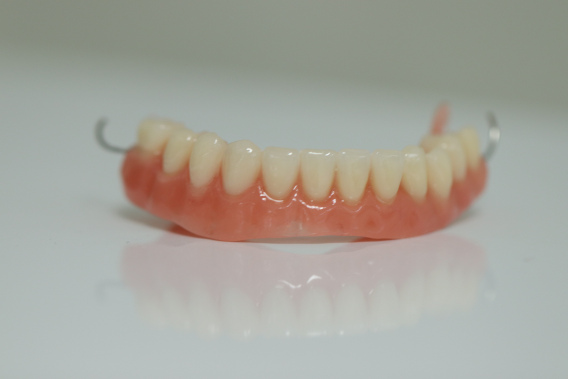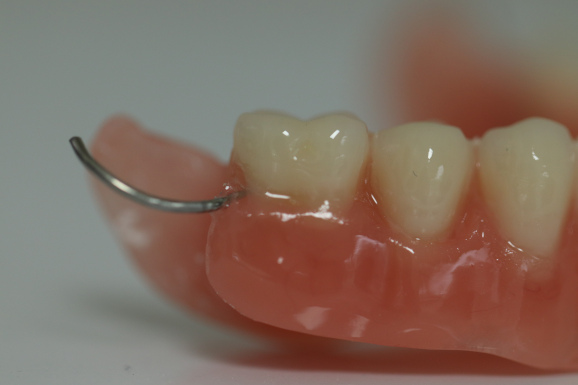Removable partial dentures

This type of prosthesis doesn’t require the grinding down of adjacent teeth. However, they are not nearly as stable or comfortable as dental implants. In fact many people, mention how uncomfortable removable prostheses are and the fact that they have a palate or roof of the mouth. The palate can affect speech and adapting to the denture is not always easy. On the other hand, they can hurt the gums while chewing. The palate reduces the taste of food and affects speech. If you are considering using a removable partial denture, please consult your dentist about the necessary adaptation to the prosthesis.
A removable partial denture replaces one tooth or several teeth. This type of rehabilitation is cheaper than dental implants; however, it is less convenient. They wear over time because they are made of an acrylic material. Wear means that the teeth can change colour or simply break with the masticatory force. They are not as effective as dental implants in terms of functionality or appearance. However, they are widely used to replace one or more teeth, as they are cheaper.
Ceramic bridges
These are also known as Maryland Bridges. They are not as durable as dental implants, but they are used as a solution for missing front teeth. They have a kind of wings that serve as hooks to attach them to healthy adjacent teeth. This type of rehabilitation to replace a missing tooth doesn’t require the grinding down of adjacent teeth. The bridge is made of resin or acrylic and seems to work a bit better than a removable prosthesis; however, it is less resistant. They don’t last as long as crowns on teeth or dental implants; the durability of this treatment is shorter and varies from person to person.
Fixed prosthesis supported by teeth
Bridges usually last 5 to 15 years. The reason for the durability of this treatment is directly related to hygiene. It is difficult for people to use dental floss to clean them under the gums. They are a common alternative to dental implants. The adjacent teeth are ground down and a bridge, for example a three-unit bridge, is glued onto them. This fixed bridge is made of ceramic or an acrylic material. The adjacent teeth need to be very healthy in order to support the bridge. It is used to replace one or more teeth and is commonly used around the world. However, it has some disadvantages; the grinding down of adjacent teeth and the price, which is sometimes higher than that of individual dental implants.
Complete removable prosthesis

This is the so-called denture. It replaces all the teeth in a jaw or mandible. It is made of a pink material to mimic the colour of the gums. The teeth are added to the pink acrylic. It looks natural and it’s not always easy to tell if the person’s teeth are natural or artificial. However, it’s uncomfortable because it’s removable. People mention discomfort while talking and chewing; it hurts the gums and alters the taste of food.
In terms of price, ordinary dentures are cheap. For example, depending on the clinic, they will cost from 200 to 500 Euros. They are cheaper than dental implants, but there is no comparison in terms of functionality. While implants are fixed and, therefore, don’t move, dentures or complete removable prostheses inevitably move when talking and chewing. People sometimes feel embarrassed by using these devices; they often find this to be an isolating and distressing situation.
The cost of replacing dentures in the long run is significant. Dentures can last 5 to 15 years, depending on each person’s masticatory force and lifestyle habits. Smokers, for example, will find that their denture’s colour changes after 5 years; the acrylic will get stained and turn yellow. Removable prostheses need to be replaced every once in a while.
Bone will tend to decrease. The jaw bone deteriorates over time. People who use dentures for many years may find it difficult to undergo a treatment with dental implants due to bone loss.

